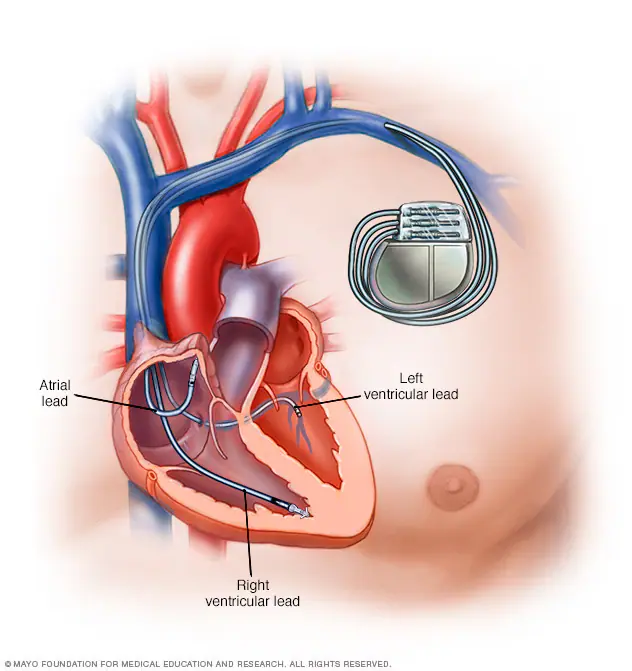Permanent Pacemaker Insertion (PPM)
A Pacemaker Insertion is a procedure where a small electronic device is implanted under the skin, typically in the upper chest, to help manage irregular heart rhythms (arrhythmias).
Relevant Anatomy
The pacemaker leads are threaded through the subclavian or cephalic vein into the heart chambers (usually right atrium and/or right ventricle). The generator is placed in a subcutaneous pocket.

1. Instruments and Equipment Checklist
Basic Vascular Tray (Sterile)
- Scalpel blades (No. 10, 15)
- Mayo scissors (straight)
- Metzenbaum scissors
- Tissue forceps (Adson, toothed, DeBakey)
- Needle holders
- Retractors (Army-Navy, Langenbeck)
- Electrocautery (bovie)
- Suction (Yankauer)
- Sterile marking pen
Specialised Equipment
- Pacemaker generator and lead system (verify model and size)
- Lead introducer sheath and dilators
- Stylets and torque wrenches
- Pacemaker programmer (rep check with technician)
- Pulse oximeter and ECG monitor
- Temporary pacing box (backup)
Sutures
- 2-0 or 3-0 Vicryl for generator pocket closure
- 4-0 Monocryl or 3-0 Nylon for skin closure
Other Equipment
- Diathermy and suction setup
- Sterile ultrasound probe cover (if ultrasound used)
- Drape pack (shoulder/chest set)
- Lead covers and implant documentation stickers
- Sterile dressing materials
Fluids and Medications
- Antibiotics: IV Cephazolin as per pre-op protocol
- Local Anaesthetic: Lignocaine with or without adrenaline
- Normal Saline: For wound irrigation
- Heparinised saline: (for flushing if required)
2. Before Knife to Skin
- Lay out all required instruments and leads on scrub table
- Initial count of instruments, sharps, and swabs with scout
- Confirm pacemaker model and type with surgical team and representative
- Check all leads and programmer with the pacemaker technician
- Ensure all required implants are opened and documented
Prepping and Draping
- Prep entire chest area using alcoholic chlorhexidine
- Use wide sterile drapes to maintain full coverage
- Drape to allow access to the left or right upper chest as per surgeon preference
- Ensure ECG leads and diathermy cables are secure and sterile field is intact
3. Intraoperative Stages
- Incision: Typically made below the clavicle on the chosen side
- Lead Placement: Via cephalic or subclavian vein; inserted under fluoroscopy
- Lead Testing: Connected to programmer to test capture and threshold
- Generator Connection: Leads secured to generator; generator placed in subcutaneous pocket
- Irrigation: Pocket irrigated with saline
- Closure: Layered closure with Vicryl and Monocryl/Nylon
4. Post-Op Tasks
- Final count of sharps, swabs, and instruments
- Clean wound and apply pressure dressing
- Confirm pacemaker settings with technician and document serial numbers
- Dispose of implant packaging per protocol
- Complete surgical notes and implant record
- Handover to PACU nurse with implant details and any post-op requirements